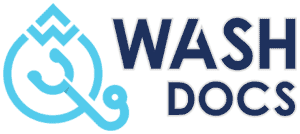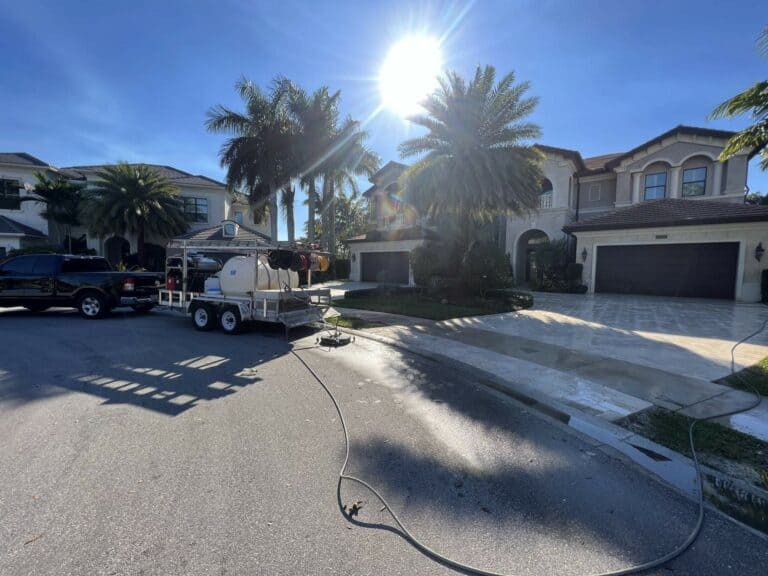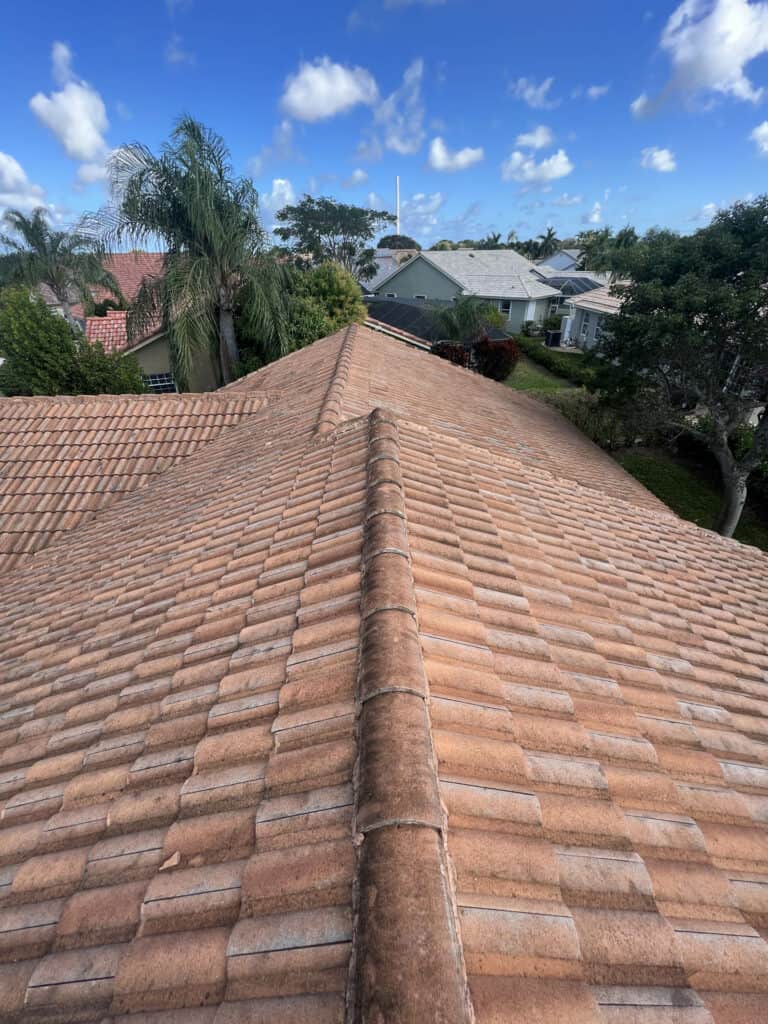Pressure washing, also known as power washing, has long been a favored method for cleaning a variety of outdoor surfaces, from building facades to patios, driveways, and more. It operates by using high-pressure water spray to dislodge dirt, mold, algae, and other stubborn contaminants. As with any cleaning method, pressure washing carries its own set of environmental pros and cons that are worth exploring.
What Is Pressure Washing?
Pressure washing, power washing, and pressure cleaning are terms that are often used interchangeably, but there can be some differences depending on the context and the specific equipment used.
- Pressure Washing: This technique uses a high-pressure water spray to remove dirt, grime, mud, mold, and other contaminants from surfaces such as buildings, vehicles, and concrete surfaces. The water in a pressure washer is typically cold or at an ambient temperature.
- Power Washing: Technically, power washing is very similar to pressure washing in that it also uses a high-pressure water spray. The key difference, however, is that power washing involves heating the water, which makes it particularly effective at removing things like grease, salt, and gum from surfaces. The hot water also kills mold and moss and prevents their quick return. The term “power washing” is more commonly used in North America, while “pressure washing” is more widely used in Europe.
- Pressure Cleaning: This is a more general term that can refer to both pressure washing and power washing. It simply refers to the act of using a high-pressure water spray to clean surfaces.
- Soft Washing: Although not mentioned in your question, this term is worth discussing in this context. Soft washing also involves a cleaning process that sprays a cleaning solution onto the surface, but it does so at a lower pressure than pressure or power washing. The cleaning solution often includes chemicals that kill organisms like mold and algae.
The key similarity among these terms is the use of high-pressure water to clean surfaces. The differences come in the details of the process: whether the water is heated (power washing) and the level of pressure used (soft washing vs. pressure/power washing). But, because these terms are often used interchangeably and can be defined differently in different regions or by different companies, it’s always a good idea to clarify what specific process and equipment are being used when hiring a professional cleaning service.
Pros of Pressure Washing
- Chemical-Free Cleaning: One of the most apparent environmental advantages of pressure washing is that it can be conducted without the use of harsh chemicals. The high-pressure water alone is often sufficient to remove dirt and grime, thus reducing the risk of chemical pollution in the surrounding soil and waterways.
- Efficiency: Pressure washing is a highly efficient method of cleaning. It can cover large areas in relatively little time, making it ideal for large properties and commercial spaces. This efficiency can result in a lower overall energy footprint compared to other methods that require more time and resources.
- Versatility: Pressure washers are incredibly versatile, able to clean a wide range of surfaces and materials. This versatility means that property owners can rely on a single, relatively simple tool for the majority of their outdoor cleaning needs, thereby reducing the need for specialized, potentially environmentally damaging products.
Cons of Pressure Washing
- Water Consumption: One of the main environmental concerns with pressure washing is its high water usage. Power washers rely on a significant volume of water to operate effectively, which can contribute to water waste, particularly in regions where water conservation is a critical issue.
- Potential for Damage: The high pressure involved in this type of washing can potentially cause damage to surfaces, particularly softer or more delicate ones. When this happens, repairs or replacements might be necessary, leading to additional environmental costs in terms of materials and energy.
- Runoff Management: While pressure washing can be conducted without chemicals, it can still contribute to pollution if the runoff is not correctly managed. The dislodged dirt, mold, algae, and other substances can enter the local water systems, potentially affecting local ecosystems.
Get Professional Pressure Washing For Your Home Or Business Today!
While pressure washing offers chemical-free cleaning, high efficiency, and versatility, its high water consumption, the potential for damage, and the need for careful runoff management must be taken into account. Like any cleaning technique, its environmental impact is largely influenced by how responsibly it is used. Implementing water-saving practices, using pressure washers suitable for the surface at hand, and proper management of runoff can significantly reduce the environmental impact of pressure washing, making it a more sustainable choice.





